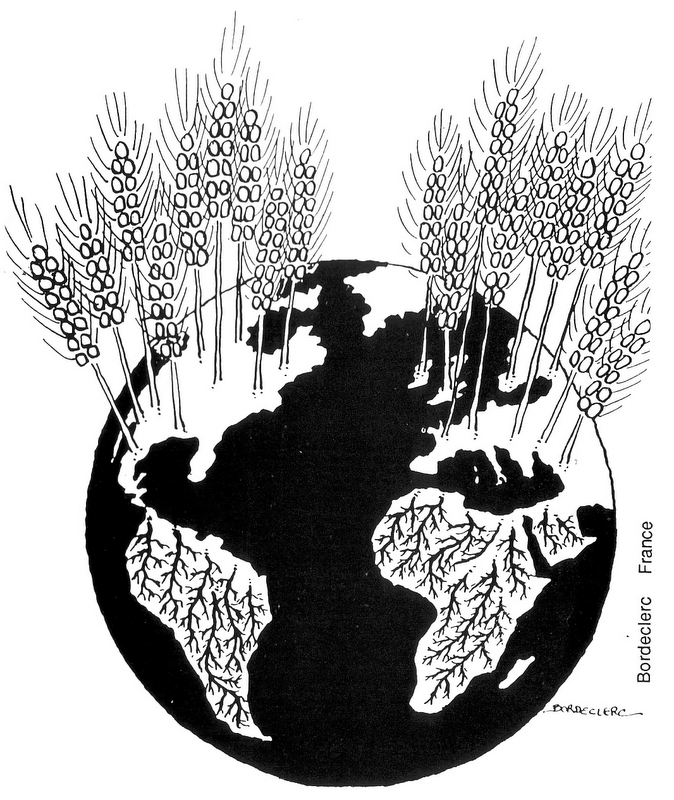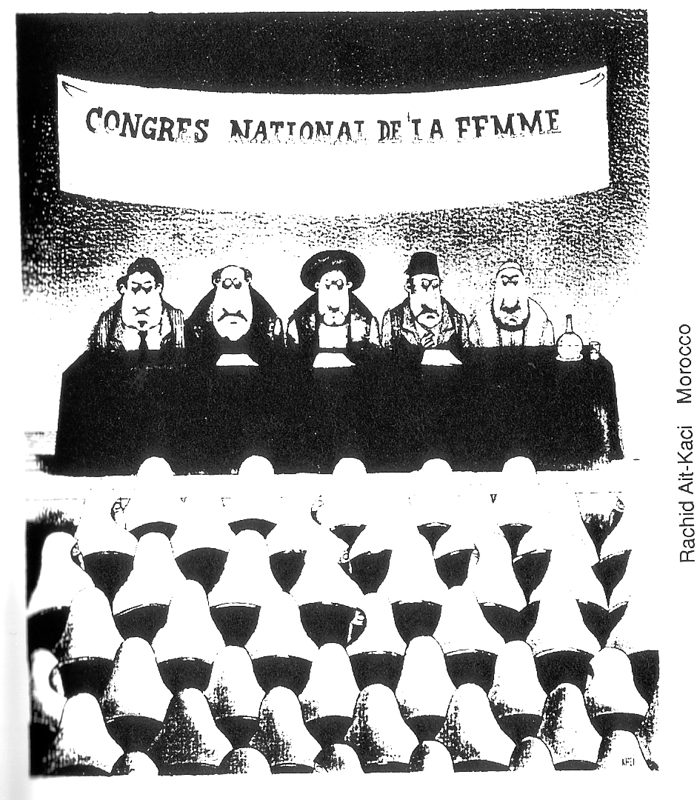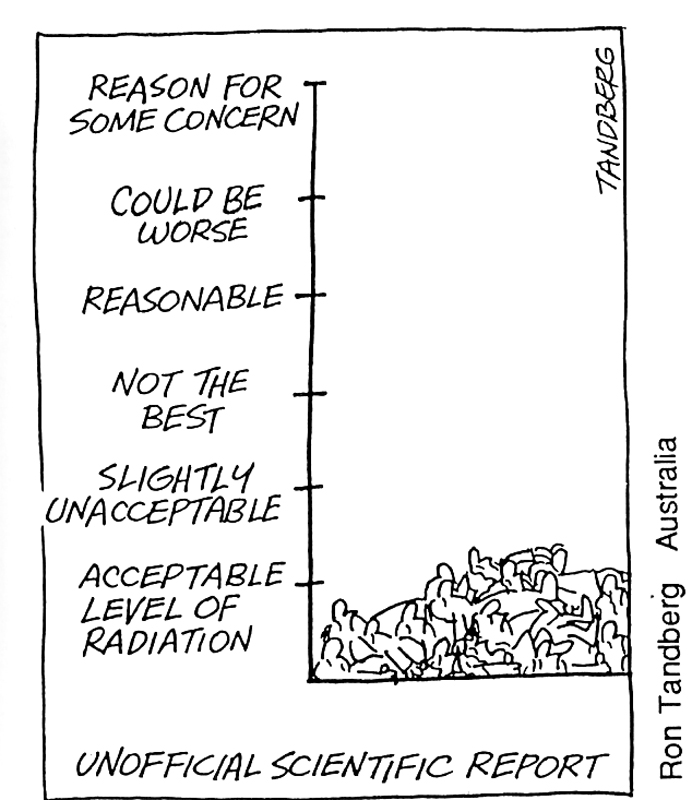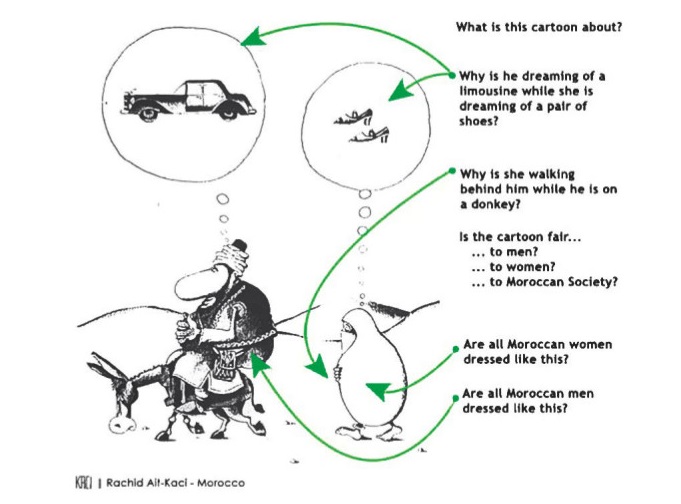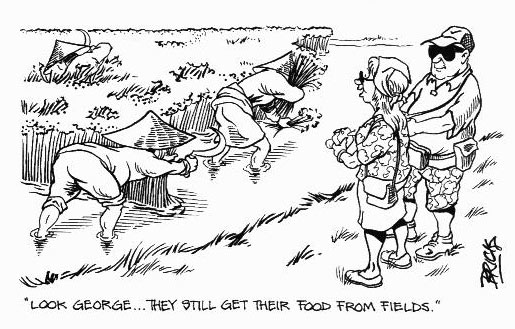
Part 1: Exploring cartoons and animations
| Part 1 has been adapted from the Think Global resource Global Learning and Cartoons (2014) on the Global Dimensions website. |
Cartoons express their creator’s experience of the world around them, to entertain, persuade or express outrage. A cartoon can be controversial, provoking strong emotional and political responses; some cartoons have been banned or have led to violence. Many are hugely popular, for example the animated films that young people might watch over and over again tell stories about social justice, conflict resolution and sustainability.
With this activity kit, teachers can:
- Examine why people use cartoons to communicate
- Investigate how cartoons express people’s opinions, beliefs and experiences and
- Use cartoons to bring global learning into the classroom through a wide variety of topics.
Getting Started
- One way to bring global learning into the classroom would be to get pupils to bring their favourite cartoon or animated film, explain their choice and use it as a starting point to investigate topics such as injustice, human rights and conflict resolution.
- Why not get them to vote from a shortlist of cartoons you’ve selected for popularity, potential and relevance to other topics? For instance, they could vote between Frozen (exploring diversity and the challenge of overcoming intolerance), Despicable Me 2 (looking at ideas of family and inclusion) and The Lorax (environment, unsustainable development and how change happens)? Discuss the results and work in teams to focus on an issue that comes up with each one, or chose your own.
- Start the discussion by asking learners to share their thoughts on one of these questions:
- What is a cartoon?
- Why do people create cartoons?
- Where and when do people use cartoons?
- How do people draw cartoons?
- Can you recognise the cartoonist?
- What styles are there?
Working in pairs, choose a couple of cartoons from our cartoon section and discuss:
What is each cartoon about?
What is the key message?
Do you think it is effective in conveying this message?
Why do we use cartoons?
We use cartoons in order to focus on communication, techniques and meaning, involving a range of global learning topics from climate change to development, government to trade.
Learning objectives
- Analyse a selection of cartoons for meaning and communication technique
- Examine and draw conclusions about why and how cartoons can communicate ideas
- Use knowledge to create cartoons
Start by showing learners a cartoon that is chosen because it makes everyone laugh, its your favourite cartoon, or if you are trying to convey a particular message. Gary Larson’s Far Side series, Jeff Kinney’s Diary of a Wimpy Kid or something from the Beano perhaps are a good place to start.
You could ask learners:
- Is this cartoon funny/interesting? Why/why not?
- Pick out aspects of how the characters are drawn or the writing style
- What can they see in the picture?
- What is the cartoon trying to tell you?
- Is there a difference between what they see and ‘the message’?
Explain how some cartoons have a ‘bigger picture’ – the one you see immediately and then the message it tells you. Show the group a satirical cartoon chosen from a newspaper on a current topic – such as Martyn Turner’s cartoons from the Irish Times (visit Martyn’s profile on Cagle or the Irish Times).
Ask leaners again what do they see in the cartoon and what do they think its trying to tell them. Show the group an article about the same topic and ask them which they would be more likely to engage with and why. What are the main differences between the first cartoon (the Gary Larson/Beano/Diary of a Wimpy Kid) and the Turner cartoon? What do they have in common?
Part 2: Using political cartoons in development and human rights education
Contents:
- Doing Development Education: ideas and resources – a starter guide
- 1. Defining (and debating) development education
- 2. Thinking about development education methodologies and evaluating learning
- Method 1 – The 3-Step approach
- Method 2 – The ‘Essential Learning for Everyone’ Framework
- Method 3: asking key questions with the Development Compass Rose
- Method 4: Public education and development issues
- 3. Ten activities to introduce DE to younger age groups
- 4. Thirty activities to introduce and explore development education
- 5. Using photographs and photopacks
- 6. Using cartoons and animations
- 7. Using Posters
- 8. Using art
- 9. Using the contents of your shopping bag
Political cartoons can be a particularly valuable resource for development and human rights education. They, at their best, encapsulate some very complex issues, different viewpoints and some of the contradictions which are a real part of many situations. They can make links between issues which can turn them inside out – this is one of the key strengths.
Political cartoons will often provide the stimulus to stop and think, to look sideways or look afresh at a particular issue. We hope that users of this section will find much to provide a focus for personal reflection. However, the main purpose of this introduction is to provide a few basic activities for the use of cartoons in discussion of human rights and development issues.
A word of warning may be necessary here. If you see education in general, or development or human rights education in particular, as a process of endorsing certain ‘acceptable’ ideas or viewpoints and rejecting others, rather than as a means of exploring, discussing and debating ideas and opinions as a means of encouraging people to make up their own minds, then don’t use cartoons – it is unlikely that they will provide enough opportunity for control! |
Cartoons have a number of distinct advantages as a stimulus to group discussion about issues:
- They often contain a lot of information yet can be assimilated quite quickly.
- It is possible for people with a range of knowledge of the issues (or none at all) to respond to the same stimulus and for the discussion to reflect their level of experience.
- The humour of cartoons also contributes – laughter is important but humour can also disarm us of our assumptions and help us to look afresh as something.
- Many of the cartoons you might use as a stimulus, will be quite explicit in the main issues they bring to a groups agenda, they are at the very same time very open ended.
- They provide an opportunity for members of a group to explore those aspects they see as most important.
The activities below and in each of the following sections can be adapted to a wide range of learning situations. It is however important to note that we need to build up our skills in group discussion and debate and in using stimulus materials such as cartoons.
The learning skills that can be developed by using materials such as cartoons include:
- making careful observations
- acquiring information from a particular cartoon or set of cartoons
- analysing and evaluating information
- relating one’s own views to those in the cartoons
- recognising the value of different interpretations
- empathising with people/situations portrayed
- forming links between different ideas and cartoons
There is also a sense in which cartoons help us to laugh at ourselves, and our involvement, individually and as a society, in often, desperate situations. Perhaps this should also be identified as a skill.
Part 3: 8 basic ideas for using cartoons
1. Warming up – what does it say to you?
You could ask this question of any cartoon but there is a special value in asking it about one that is open to very wide interpretation such as those that follow immediately below.
The discussion moves rapidly away from from the cartoon to the interests and concerns of members of the group. This kind of activity is particularly valuable when trying to work with a new group or when members don’t know each other. A reasonable amount of time should be allowed for people to work on their initial thoughts and to share ideas etc.
2. A closer look – now you see it, now you don’t
There are a number of simple activities which encourage people to take a closer look at a cartoon and to say how they see it and the issues it raises.
For example… working in pairs, each with their own cartoon, they look at the cartoon without showing it to the other person. They then describe to each other what the cartoon is about and then compare the actual cartoons with their descriptions. How accurate was the description? What was left out? How is the cartoon different from the description offered?
3. Reading a cartoon
At an early stage it may be useful to take time out to discuss one or two cartoons and work on ‘reading’ them.
Ask small groups to look closely at the detail:
- What is the cartoon saying?
- What different interpretations of the cartoon might there be?
- What symbols are used?
- Who are the characters?
- What is suggested about the context of the cartoon?
Bring the groups together to share their discussions but try to steer the discussion away from the issues that arise and, instead, try to concentrate on how individuals ‘read’ the cartoon.
4. What’s the theme? – What are the issues?
When you introduce a theme to a group it is useful to find ways to explore what the group already knows about it and how best to build on this as a prelude to working more in depth on the issue.
Display a selection of, say, 15 cartoons and ask the group to look at them. Working in pairs or three’s, decide what main themes link them together. They could then group the cartoons together that highlight the issues best and arrange them in a poster for sharing with others.
5. Sharing views
Another useful way to introduce a collection of cartoons is to ask people to choose three cartoons from those on display which they liked most… or which say most to them about the issues being discussed. They could mark these with a sticker with their name on it. They could then pair up with someone who has chosen the same cartoon(s) and discuss their choice. Did they see similar or different things in the same cartoons?
This activity also has the advantage of mixing the group, reviewing the whole collection and working with some cartoons more closely. The pairs can then share some of their discussions with others and introduce one of the cartoons they chose.
6. Headlining… changing the context
Ask pairs to choose a cartoon around which they develop a headline or short article. If they use different headlines, does it influence how the cartoon comes across?
The pairs could then share their articles with the rest of the group. It may be useful to choose different cartoons and in this way raise a wide range of issues or choose the same one and explore the different ways it is worked into the article.
You could use a cartoon such as that below. The original cartoon said Luxembourg, Bruxelles and Strasbourg on the signposts… what would your group wish to put on the signs and why? What would the message(s) be?
7. Questioning and asking questions
It is valuable both as an introductory activity or when you are wanting to discuss more detailed issues to focus on one or two cartoons and make a more detailed study of them.
Give each pair a copy of a cartoon mounted on a large sheet of paper and ask them to write as many questions as they can relating to the cartoon. This encourages a closer look at detail as well as the cartoon as a whole. It is not necessary to be able to answer the questions, the process of asking them will provide a good stimulus to the discussion when they share their work with other groups.
Another approach which would help more detailed study of one cartoon is for you to pose the questions for the group to consider. In order to encourage a group to discuss the cartoon below, for example, you could ask questions such as the following:
8. Ranking
This is a very effective activity to encourage groups to consider a small collection of cartoons [say nine] in detail. Give each group nine cartoons and ask them to order them in terms of those they feel raise the most important issues – to those that raise the least important. Alternatively you could ask pairs to rank the cartoons in terms of those they like most/least.
Suggest that they rank them in a diamond pattern such as the one here. When they have done this they can compare their ranking with those of other groups. This can lead to a full discussion because the task makes sure everyone has been involved in thinking about the issues.
References
- Colm Regan, Scott Sinclair and Martyn Turner (1988) – Thin Black Lines, Development Education Centre, Birmingham.
- Colm Regan, Scott Sinclair and Martyn Turner (1994) – Thin Black Lines Rides Again, Development Education Centre, Birmingham.

